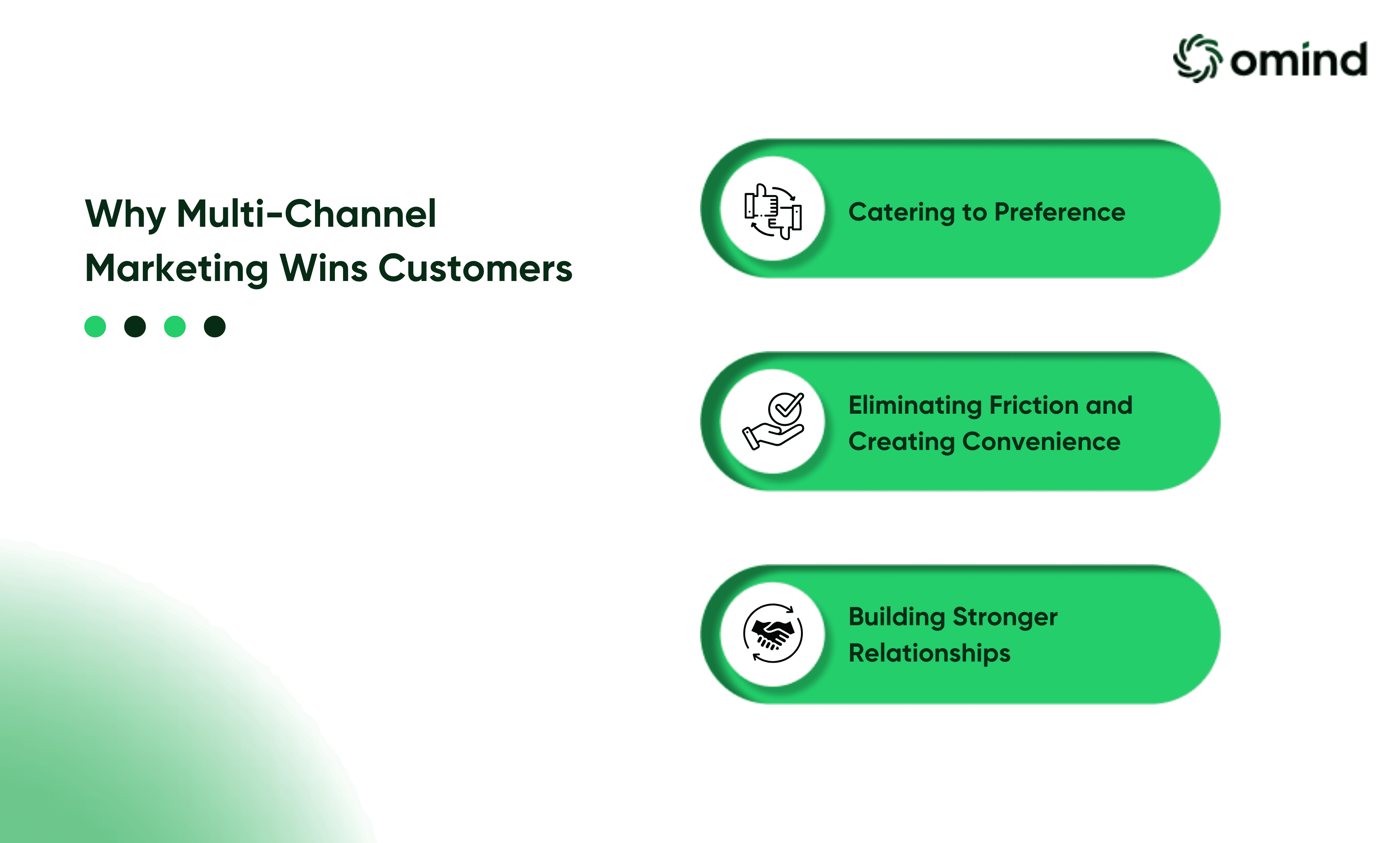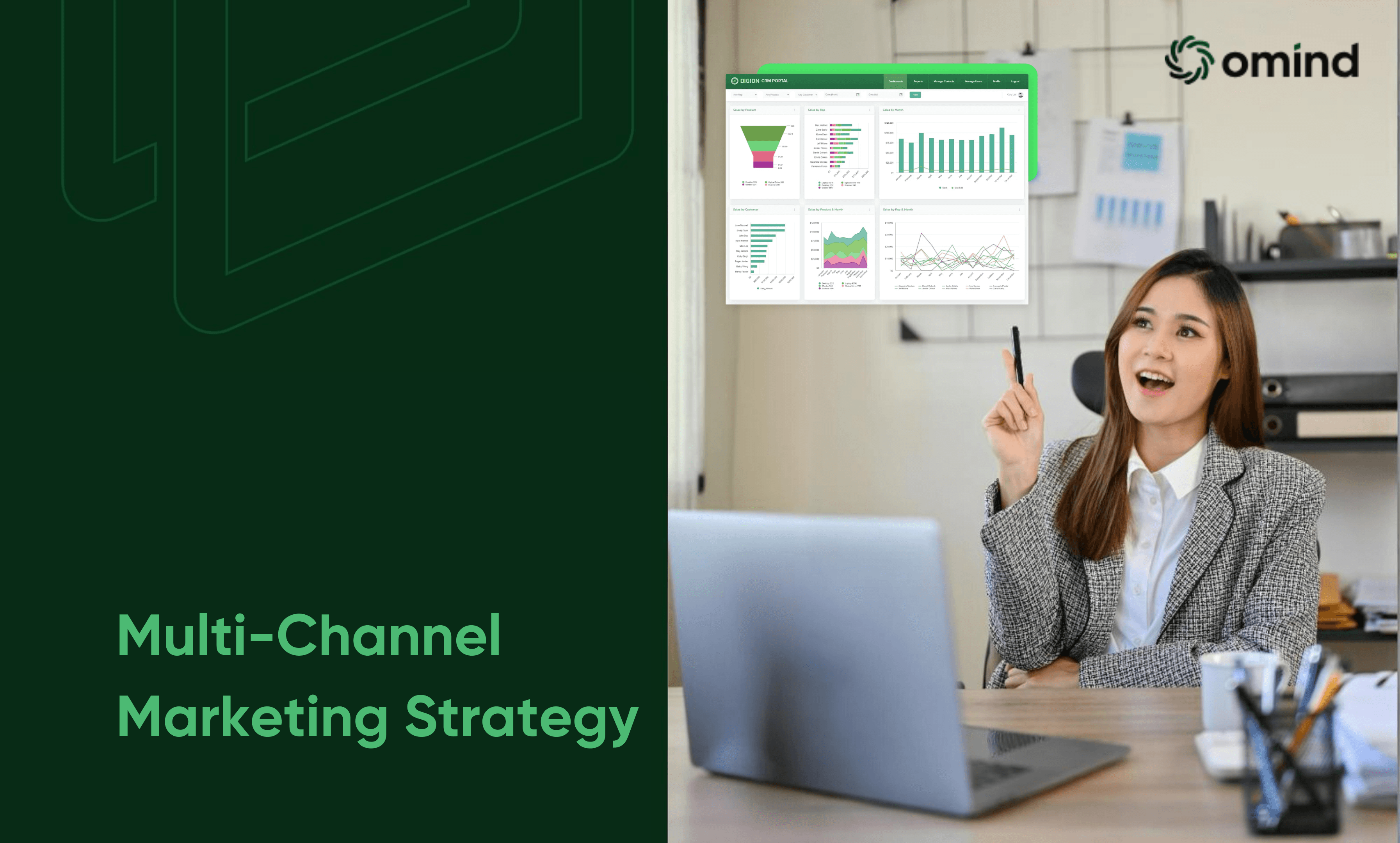The marketing arena is no longer the straightforward competition it once used to be. Today's consumers expect a completely integrated experience across various touchpoints, most of them digital. This is where a multi-channel marketing strategy comes into play.
Multi-channel marketing involves utilizing a combination of online and offline communication channels to reach and engage your target audience. This strategic approach ensures your message reaches customers wherever they are, fostering brand awareness, engagement, and ultimately, conversions. Read on to find out how a multi-channel marketing strategy can help your business!
The Power of Choice: Why Multi-Channel Marketing Wins Customers

Today's consumers are bombarded with information and marketing messages across a vast array of channels. They've become accustomed to having control over how they receive and interact with brands. A multi-channel marketing strategy acknowledges this by providing options, ultimately leading to a more satisfying and frictionless customer journey.
Catering to Preference
A multi-channel approach allows you to cater to customer preferences in how they receive information and interact with your brand. Imagine a customer interested in a new pair of shoes. They might prefer in-depth reviews and detailed product descriptions via email. But for quick updates on sales or new arrivals, social media might be their go-to platform. By offering content across different channels, you can deliver the right message in the right format, maximizing engagement.
Furthermore, a multi-channel strategy allows you to reach customers where they are. Consumers utilize different channels for different purposes. Some might scroll through social media during their commute, while others check email during work breaks. By being present on the channels your audience frequents, you increase the chances of capturing their attention at the right moment.
Eliminating Friction and Creating Convenience
A multi-channel strategy goes beyond just being present on various platforms. It fosters a smooth customer journey across all touchpoints. Imagine a customer browsing a product online and then being able to easily access reviews on social media or visit a nearby store for a hands-on experience. This interconnectedness removes friction points and simplifies the buying process.
This interconnectedness can evolve into an omnichannel experience. While multi-channel marketing focuses on utilizing various channels, an omnichannel approach takes it a step further. It strives to create a unified and consistent experience across all channels. This might involve allowing customers to seamlessly switch between online and offline channels, like adding an item to their cart online and completing the purchase in-store.
Building Stronger Relationships
A multi-channel strategy allows you to personalize communication and build stronger relationships with your audience. By using customer data and understanding their preferred channels, you can tailor messages to their interests. Imagine receiving birthday discounts or product recommendations tailored to your interests – it feels more genuine and increases the likelihood of engagement.
Key Ingredients of a Successful Multi-Channel Strategy
Customer-Centricity at the Core: Understanding your audience's needs, preferences, and pain points is paramount. Tailor your messaging and content to resonate with each specific customer segment.
Maintaining Consistency Across Channels: Brand voice, messaging, and visual identity should be consistent across all platforms. This creates a sense of familiarity and trust for your audience, regardless of the channel they interact with.
Using Marketing Automation: Automation streamlines campaign execution, allowing you to deliver targeted messages and personalized experiences across various channels efficiently.
Personalization is Key: Personalize your marketing efforts based on customer data and behavior. This creates a more relevant and engaging experience for each individual.
Data-Driven Optimization: Track performance metrics across channels to identify what's working and what's not. Use these insights to continuously optimize your campaigns and maximize ROI.
Developing a Winning Multi-Channel Strategy

Harnessing Customer Data: Analyze customer data to uncover trends, preferences, and behavior patterns. This information forms the basis for creating targeted and personalized marketing strategies across channels.
Understanding Channel Preferences: Different platforms cater to specific audience segments. Identify the channels your target audience utilizes most and tailor your content and messaging accordingly.
Ensuring Cohesive Experience: Maintain consistency in brand messaging, visuals, and overall customer experience across all channels. This cultivates brand recognition and fosters trust among consumers.
Selecting the Right Platforms: Choose platforms that align with your campaign goals, target audience, and analytics capabilities. Consider factors like content format, audience demographics, and data integration when selecting channels.
Coordinated Marketing Efforts: Ensure all marketing activities across various media functions, in unison. This creates a seamless experience for customers regardless of the channel they interact with.
Streamlining Data Pipelines: Integrate data pipelines to ensure seamless flow of customer information across platforms. This provides a holistic view of customer interactions and facilitates data-driven decision making.
Comprehensive Planning: Develop a comprehensive marketing plan that outlines objectives for each channel and how they work together to achieve your overall marketing goals.
Tailored Content for Each Platform: Create engaging content specifically designed for each platform's format and audience preferences. This ensures maximum impact and resonates better with your target audience.
Challenges and Solutions in Multi-Channel Marketing
A multi-channel marketing strategy, while powerful, presents its own set of hurdles. One of the biggest challenges lies in maintaining consistency across diverse channels. Coordinating messaging, visuals, and overall brand experience requires clear communication within your marketing team. Establishing comprehensive brand guidelines is crucial, ensuring a unified voice and image regardless of the platform a customer encounters.
Technology can also be a double-edged sword. Integrating the various marketing technologies used across different channels can be a complex task. Investing in robust marketing automation tools is a wise first step. However, the true challenge lies in ensuring proper system integration. Seamless data flow is essential for a holistic view of your marketing efforts.
Measuring the effectiveness of a multi-channel campaign can feel like untangling a web. Traditional methods often fall short. Here, marketing attribution models become your allies. These models help determine the impact of each individual channel on customer conversions and your overall return on investment (ROI). By understanding which channels are driving the most conversions, you can optimize your budget allocation and focus resources where they yield the greatest results.
Finally, data quality is the lifeblood of any successful marketing campaign, and multi-channel is no exception. Inaccurate or incomplete data can lead to misleading insights and ultimately, wasted resources. Employing data cleansing practices ensures the information you rely on is accurate. Additionally, advanced analytics tools can be used to identify and address any data quality issues, ultimately providing you with the clear and actionable insights needed to optimize your campaigns for maximum impact.
The Benefits of a Flourishing Multi-Channel Strategy

A Holistic View of Customer Interactions: A multi-channel approach provides a comprehensive view of customer interactions across all touchpoints. This allows you to identify customer preferences and tailor your marketing efforts for maximum impact.
Competitive Advantage: A strategic multi-channel presence establishes a strong brand presence and fosters deeper customer relationships. This creates a competitive advantage in today's dynamic market.
Enhanced Customer Engagement: Multi-channel marketing keeps your brand at the forefront of your audience's minds by engaging them through various channels they frequent. This fosters stronger brand loyalty and promotes consistent interactions.
Measurement and Optimization
Evaluating Channel Performance:
Monitor key performance indicators (KPIs) across channels to understand what's driving results. These metrics can include website traffic, conversion rates, engagement metrics (likes, shares, comments), and customer acquisition cost (CAC).
Analyze engagement metrics to identify which channels resonate most with your audience. This helps you tailor your content and messaging for each platform to maximize impact.
Track customer journeys across channels to understand how customers interact with your brand before converting. This holistic view allows you to identify potential roadblocks and optimize the overall customer experience.
Marketing Attribution Models:
Marketing attribution models help determine the role each channel plays in a customer's journey, ultimately leading to a conversion.
Common models include first-touch attribution (credits the first channel a customer interacts with), last-touch attribution (credits the final channel before conversion), and multi-touch attribution (distributes credit across all touchpoints).
By utilizing attribution models, you gain a clearer understanding of how your multi-channel strategy is performing and can optimize your budget allocation accordingly.
Optimizing Your Strategy:
Based on the data and insights gathered, continuously refine your multi-channel strategy.
A/B test different content formats, messaging approaches, and channel combinations to identify the most effective tactics for your audience.
Allocate resources strategically, focusing on the channels that deliver the highest ROI. Don't be afraid to experiment and adapt your approach based on what works best.
Final Thoughts
Building a successful multi-channel marketing strategy requires careful planning, integration, and ongoing execution. By using customer data, marketing automation, and targeted content across various platforms, you can create a cohesive and engaging brand experience that resonates with your target audience. Remember, the key is to adapt and coordinate your campaigns across multiple channels, fostering deeper customer relationships and driving long-term success.
AUTHOR
Team Omind
Empowering Businesses with Unified Customer Experience Platform, Leveraging Advanced AI and Intelligent Automation.
PRODUCT
Conversational AI
Share LINK
Related Blogs





